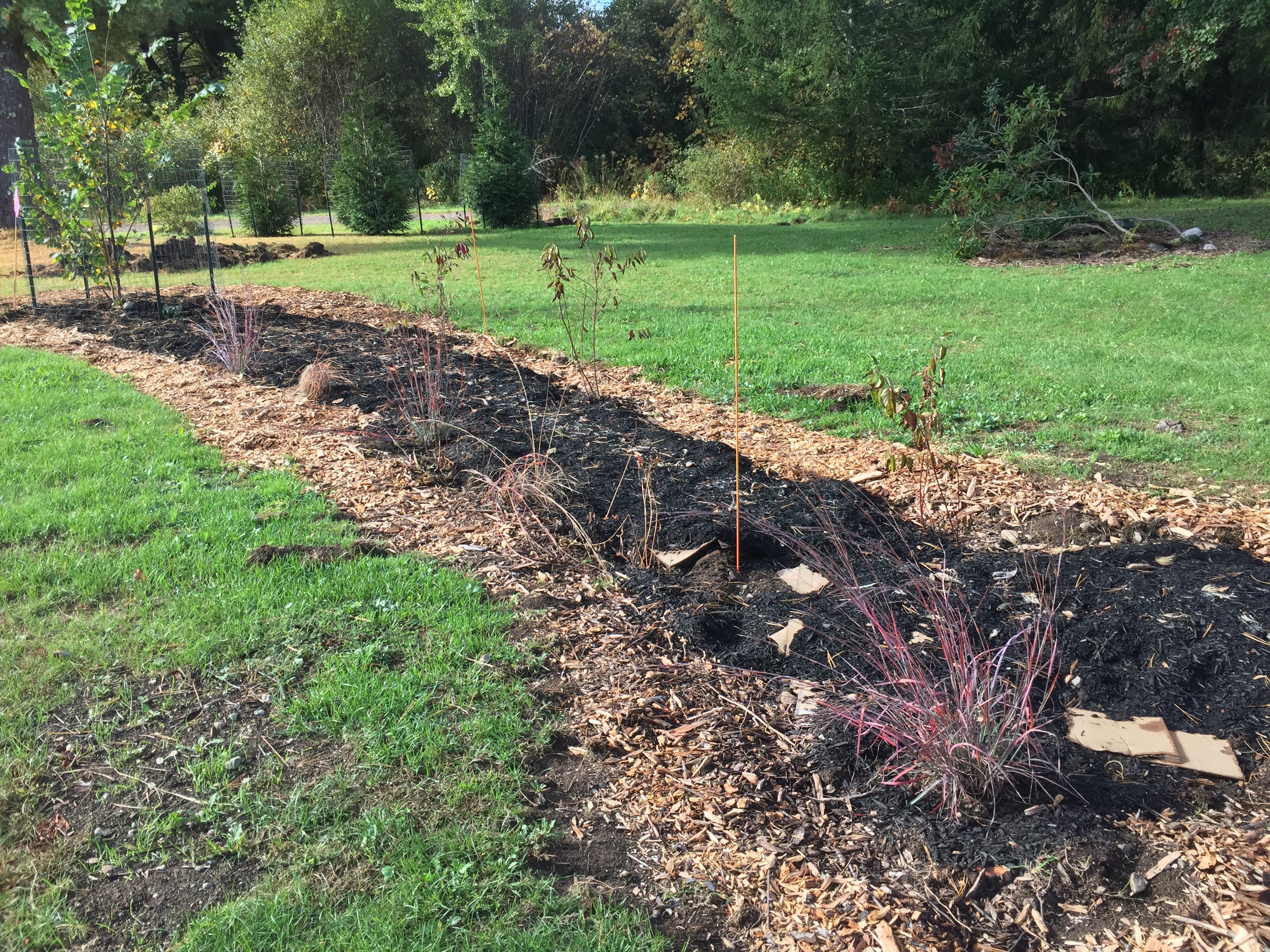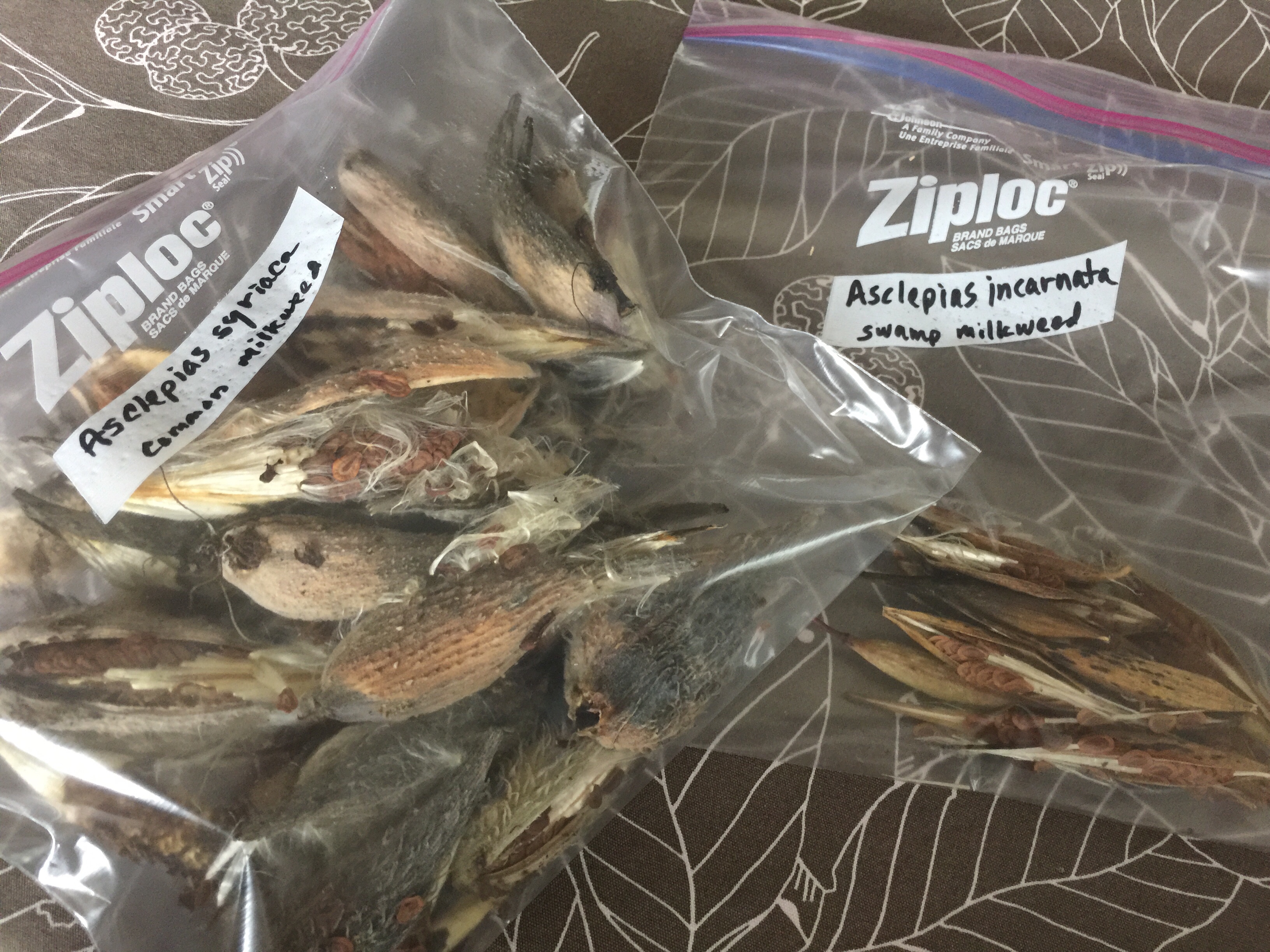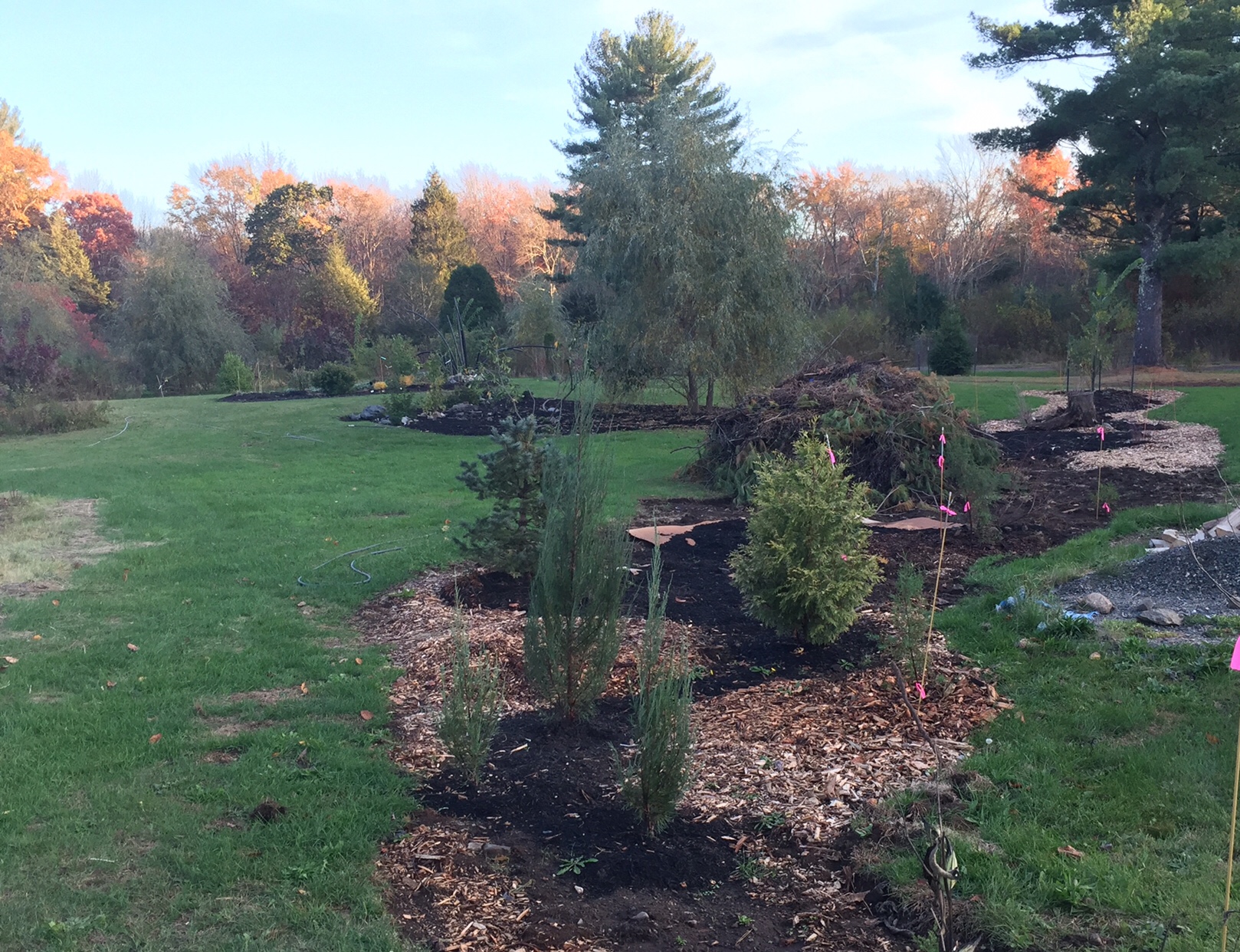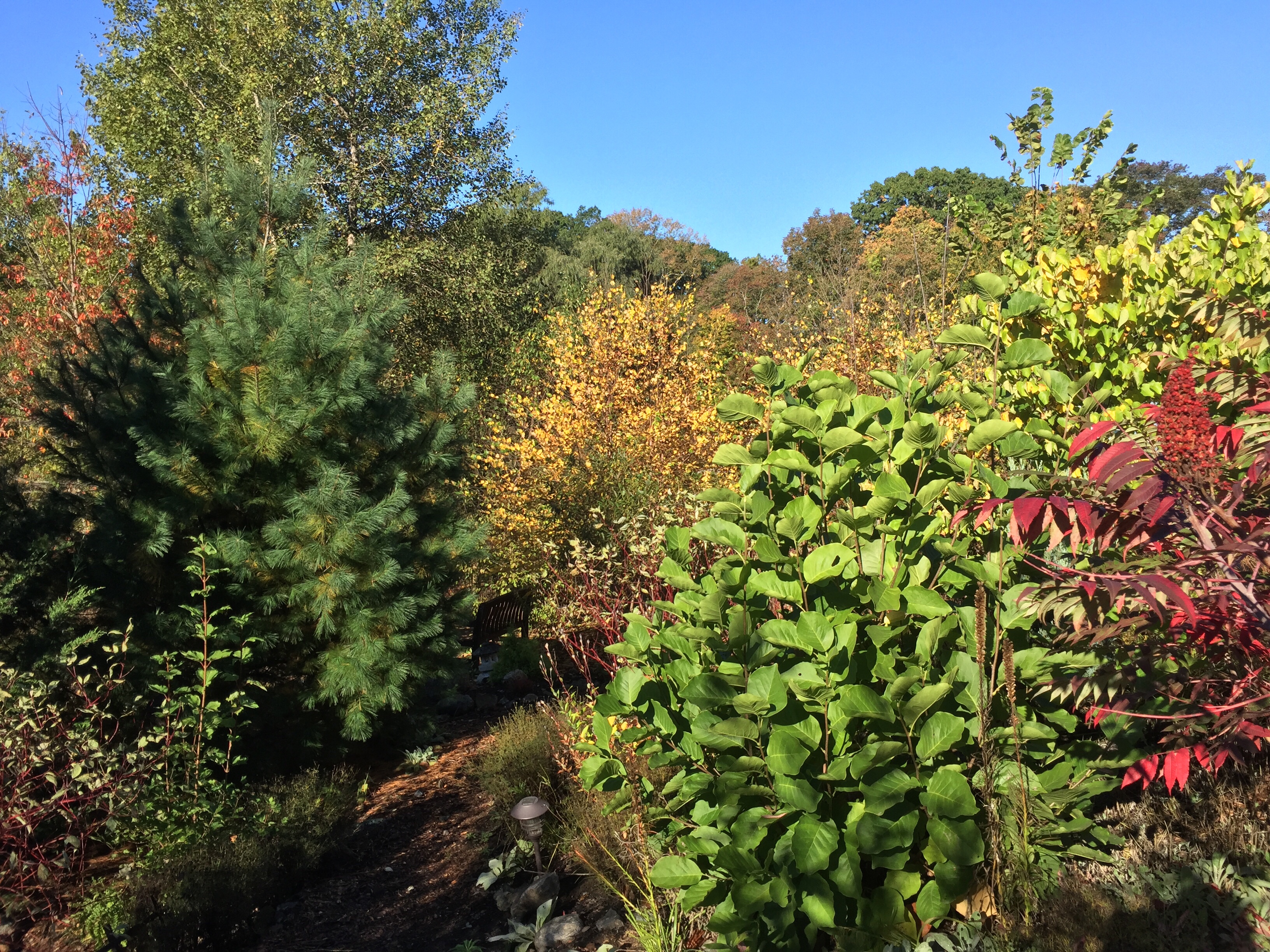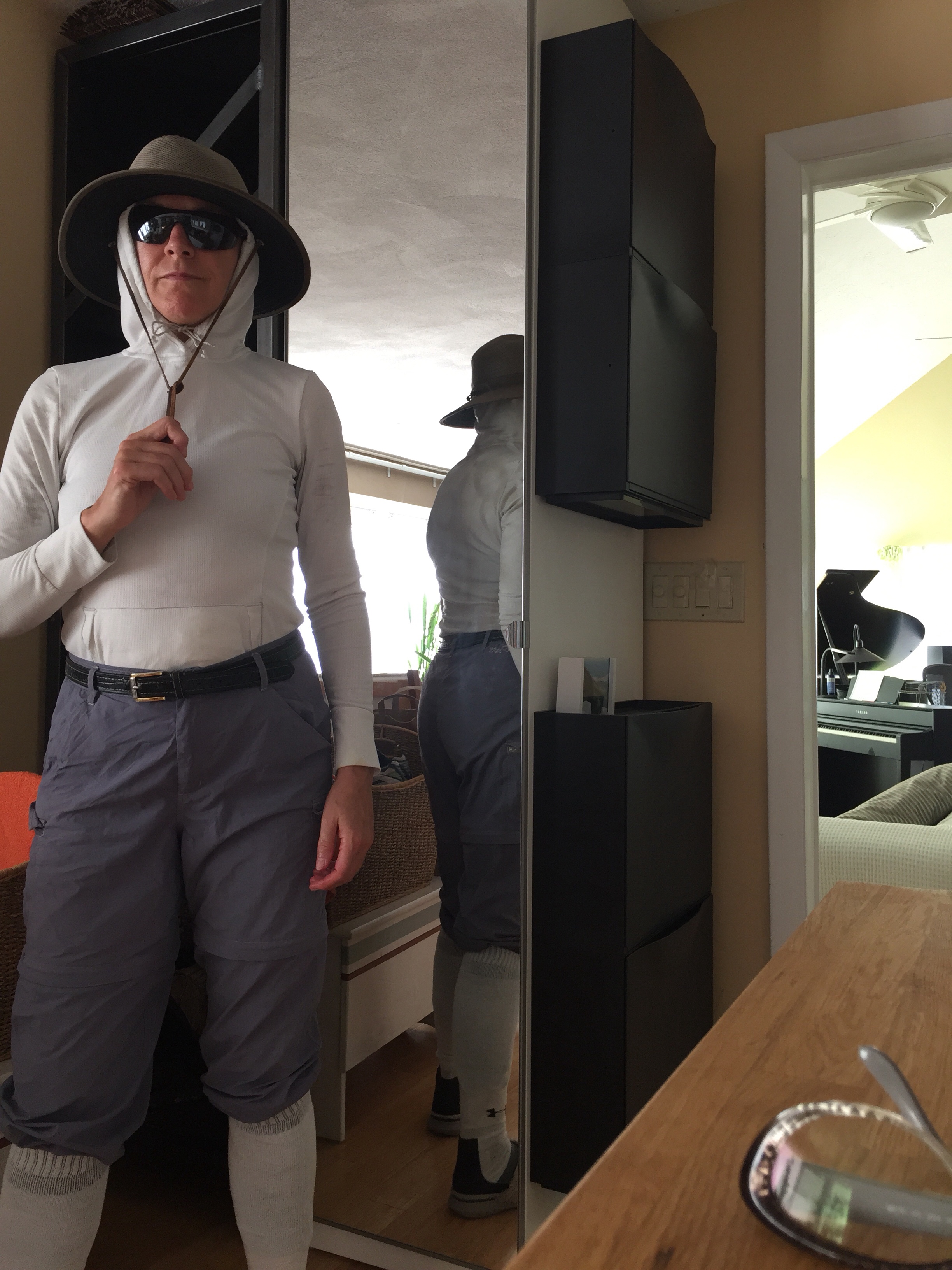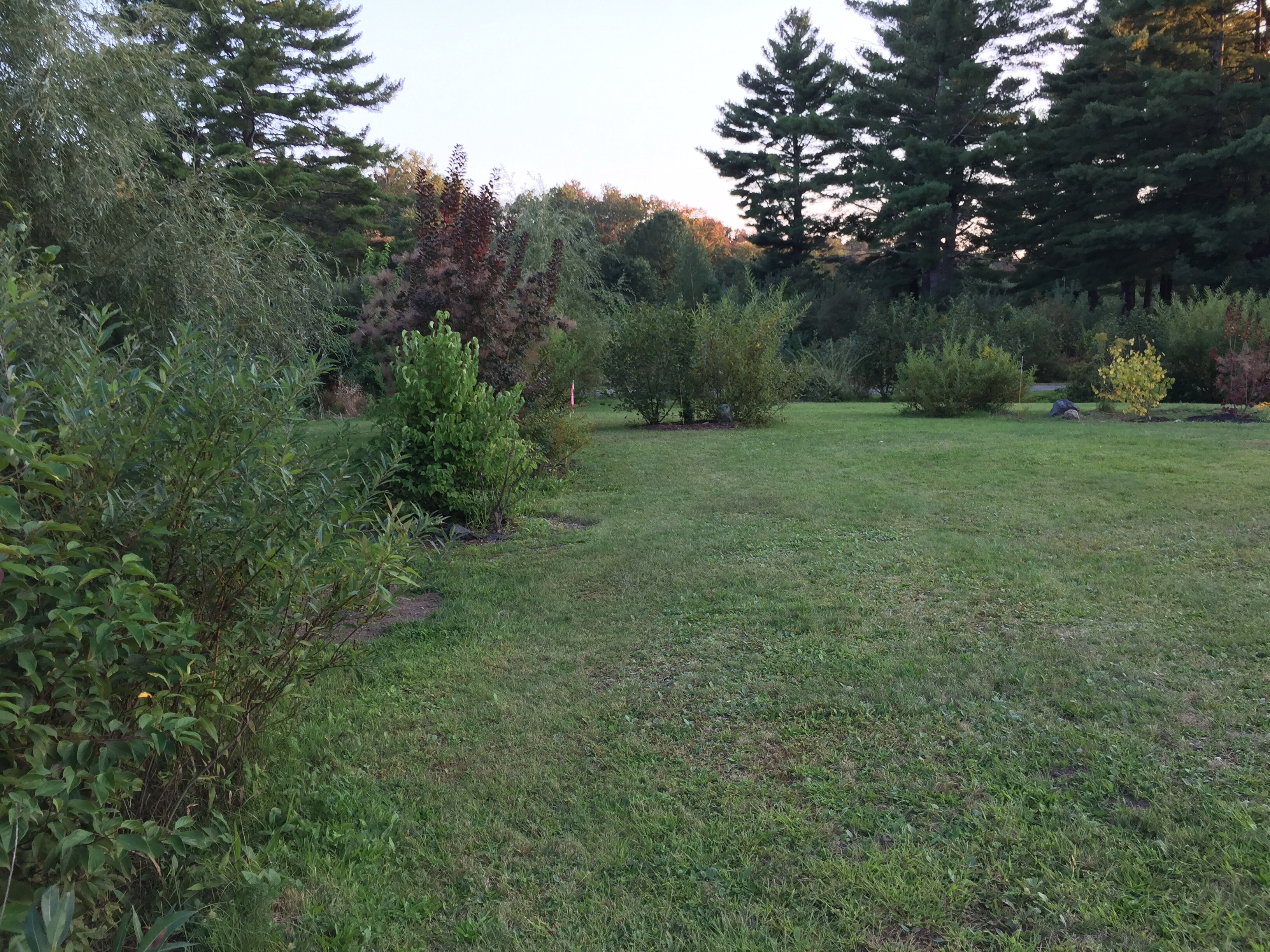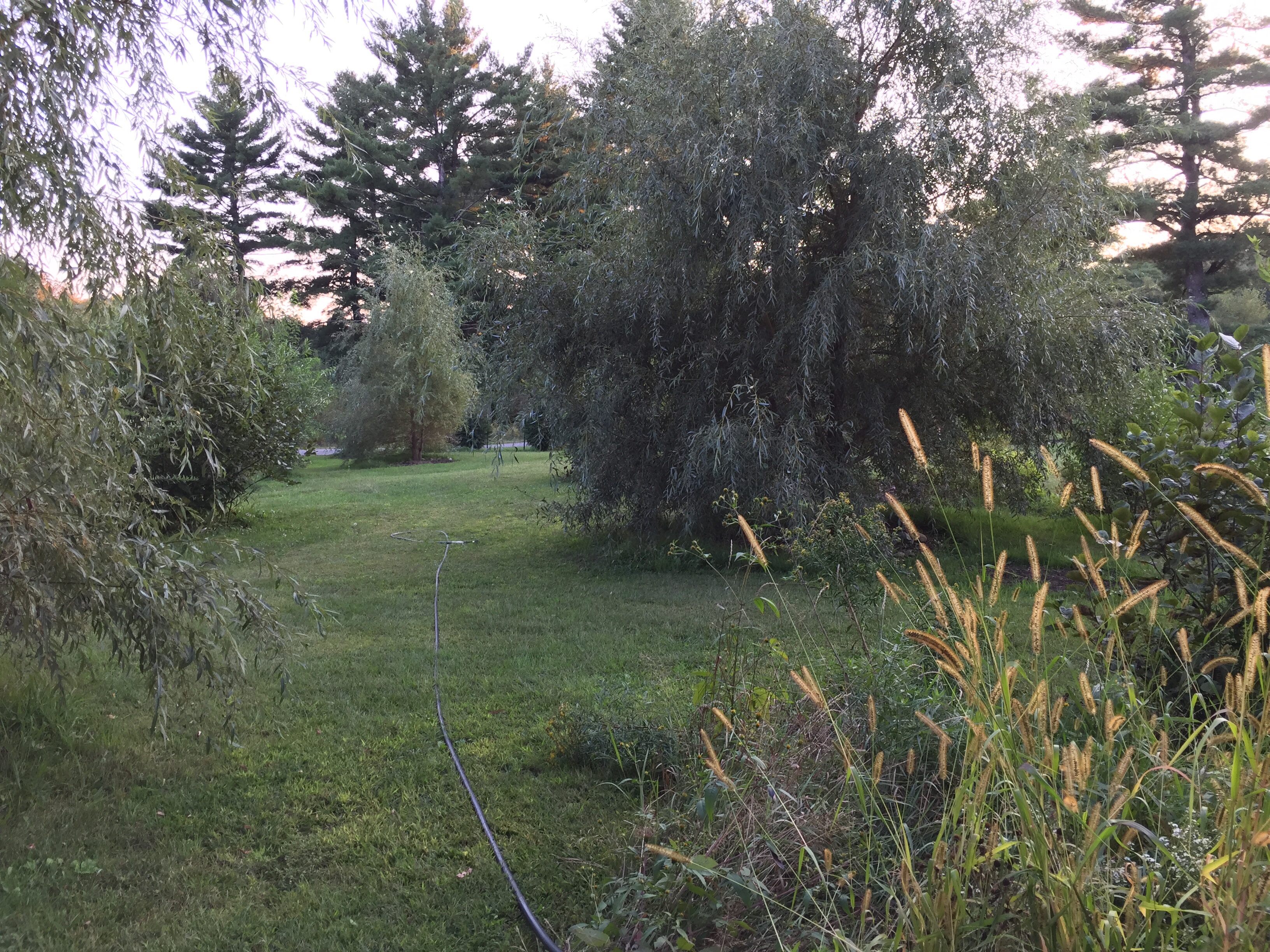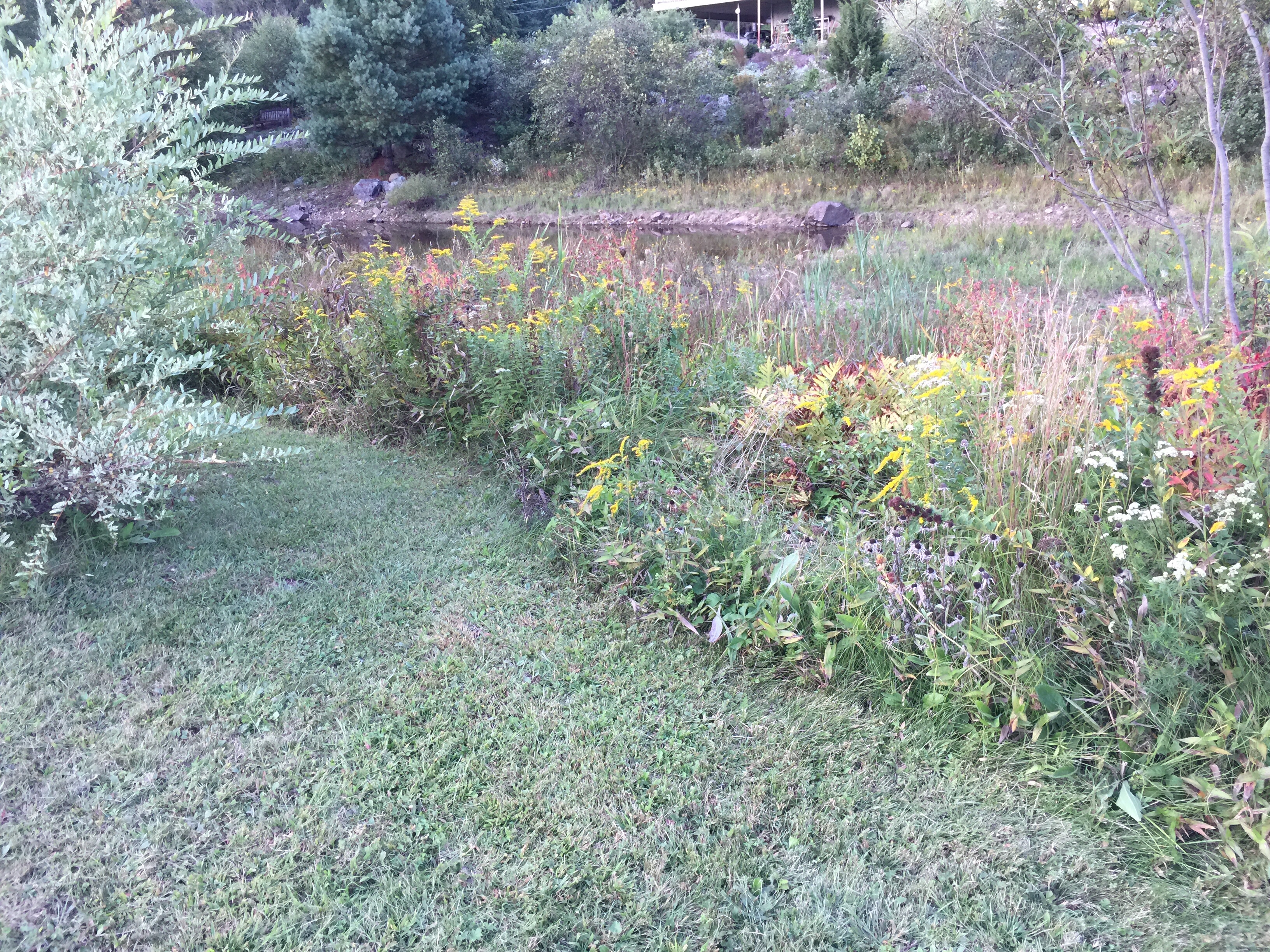Multiflora rose and buckthorn are lurking in this jungle, bittersweet vines are choking out the aspens while knotweed is killing all other shrubs and young trees, October 9, 2009:
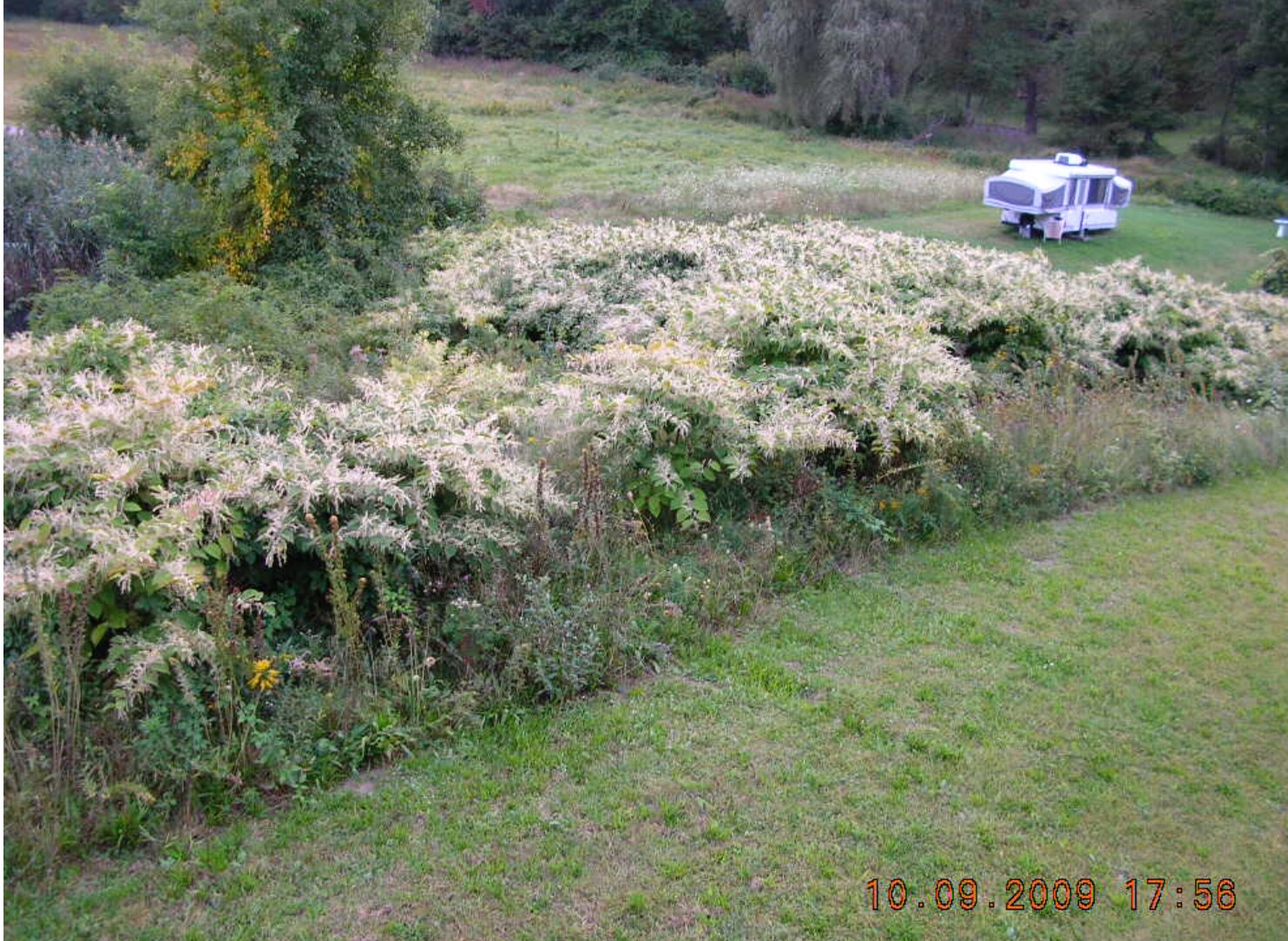
This photo was taken October 10, 2017:
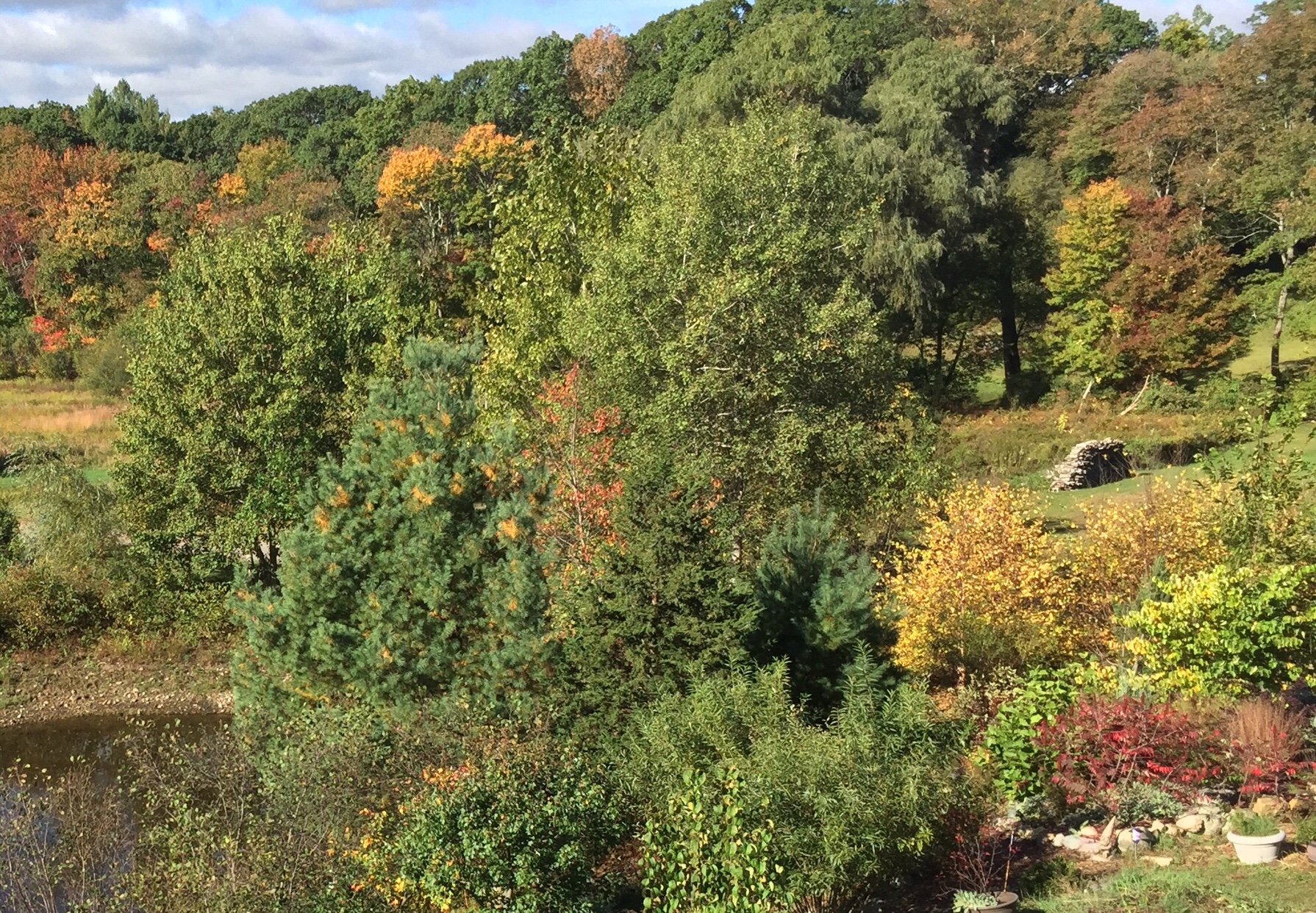
Existing native aspen, juniper and pine trees have all grown. Willow, dogwood, magnolia and sumac shrubs are all thriving. Rudbeckia, bluestem, coreopsis, liatris and creepervine are holding their own, close to the ground. All 3 layers greatly minimize knotweed resprouts. Though we still occasionally encounter knotweed, it’s not the most troublesome weed anymore by a long shot.
